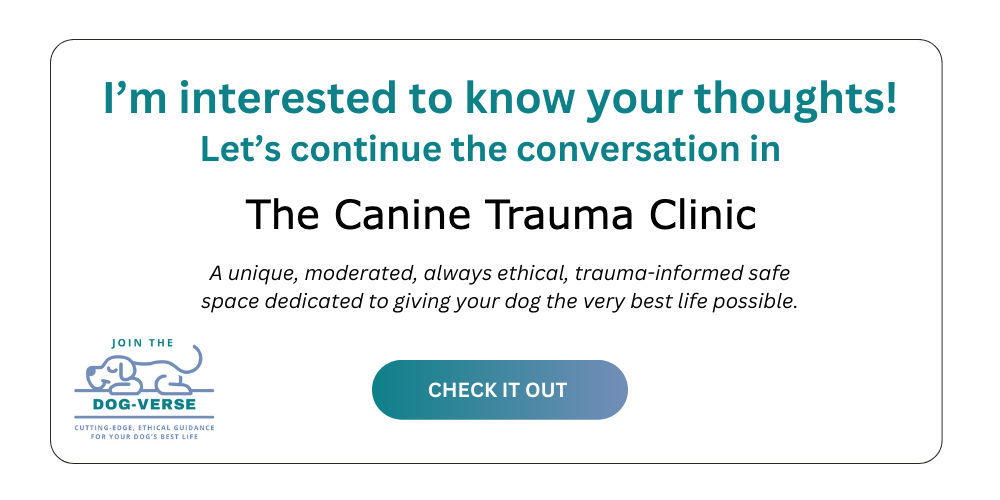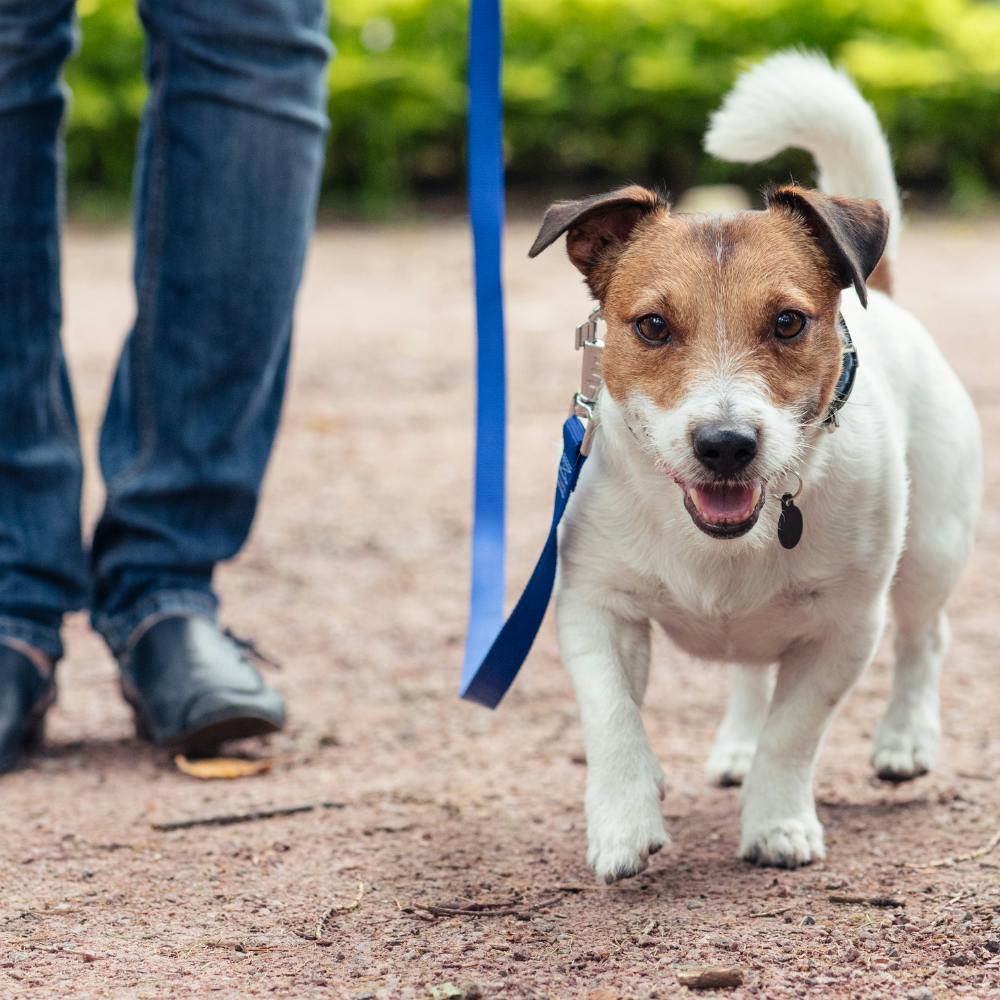by Pro Trainer Annie Phenix, ACB-KSA
What I’ve Learned from Shelter Dogs
By Pro Trainer Annie Phenix, ACB-KSA
(NOTE: I am re-issuing this blog I wrote a few years ago because there is a crises in shelter populations and rescue that is the worst I have ever seen – too many dogs and not enough adopters. Can you help your local shelter?)
I rescued my first dog from an Austin high-kill shelter in 1995. Back then, the shelter was so poorly staffed that anyone could walk into a kennel and introduce themselves to the caged, over-stimulated, stressed out or even aggressive dogs. Because I could enter unsupervised, I quickly learned to decipher body language from a distance and then up close and personal. I had to learn fast or risk a bite from some very anxious animals. In spite of their high level of agitation, no dog bit me or even tried. Most were simply terribly frightened.
I am especially grateful to the pit bull type dogs– and I am sad as there are still too many pitties in shelters who deserve loving homes. Despite having a reputation of being “aggressive,” I found most of the pit bull type dogs to be people gentle – snuggle bugs who were quite freaked out to find themselves in a loud shelter. I learned an enormous amount from these dogs as they were so infrequently taken out for walks and they were often even more anxious than many in the same situation.
One day I was alone in an open field with a pit bull that no one else wanted to walk because of his size and challenging demeanor. I came up with the idea of running him in a large circle on-leash because there was no place where he could run off-leash. He was kenneled 24 hours a day except when he was with me.

The dog enjoyed running fast in a big circle around me but in a nanosecond he interrupted his run and flew through the air straight at me. With quick reflexes, I blocked his leap with the leash before he made it to my face. He dropped the leash from his mouth and continued to climb up the remaining leash by his strong teeth. I became quiet and stopped moving, talking softly to him, waiting for the bite, praying he wouldn’t do it. He calmed down just in time and didn’t bite me, teaching me a valuable lesson.
Had he bitten, it would have been my fault and not his. I would not have forgiven myself easily either because a bite would have ended his life that day. I thanked him for his lesson and was more careful in the future, letting him run in short bursts, then some calming time, more short running and so on.
It worked.
Shelter Dogs Taught Me About Life
Dogs stuck in shelters taught me more than just canine body language however. I learned about perseverance, especially from dogs who had no true behavioral prob- lems but were passed up every day because of human dislikes, such as being the wrong color, the wrong breed or mix, the wrong size or the wrong age. Most still wagged their tails as people walked past them. Captive dogs made eye contact with humans every day as they sat in their jail cells waiting for someone to notice them. Many (but certainly not all) dogs remained upbeat and interested in their sparse surroundings.
Would humans in the same environment still be so optimistic? Doubtful.

I’ve observed dogs euthanized in shelters. Often back then the euthanasia happened in front of the other dogs still in cages waiting their turn for the needle. If you want to learn compassion from the most masterful animal on the planet, watch dog after dog being “put to sleep” and observe them trying to lick the hand of the person administering the death serum. Yes, some dogs fought not to die. Many more of them, however, gave what looked like love to the person doing the killing (the humans who do this are not responsible for shelter overcrowding and their job takes an enormous toll on most of them).
I’m not convinced at such times that we humans are completely deserving of a dog’s love. We let them down again and again but still they love us unconditionally, even as we kill them every day, cover them in black, plastic bags and send them to the dump like trash.
One of my favorite ACOs (Animal Control Officer) worked in a tiny town outside of Austin where, as with many small towns, the animal shelter was under the direction of the police department. The local police chief walked through this particular kennel early one day and announced to the ACO that the room stunk (it smelled like a clean shelter). He told the ACO, who had purchased a washing machine and dryer with her own meager funds so she could wash the towels she brought to keep the animals warm, to kill every dog in the shelter. All of them — even the 17 puppies. She had to do what she was told or be fired, and she did, weeping over each one. I came in that afternoon to pick up puppies not knowing what had transpired earlier that day.
I was too late.

I quit fostering after that.
For a decade I had walked through crowded shelters willing to face the heartache of not being able to save all of the dogs. The heartache finally became too much for me to bear – I hit my compassion fatigue level.
That experience and countless ones like it taught me that there are two types of humans — those who have empathy for other living creatures and those who do not.
In rescue work, you see too many of the uncaring sort of humans. In order to continue to help dogs where I could and not hate every person on the planet, I had to concentrate – hard – on the kind humans. I learned to avoid the unaffected humans like the police chief who could waltz through a shelter and order every dog to be killed – not even allowing a scheduled rescue pick up of several puppies. Did he lose sleep over it? Doubtful. I did, and the ACO was so heartbroken that she quit shortly thereafter.
Shelter Dogs Are Good Dogs, Too
I opened my heart to the good people adopting the formally unwanted dogs. We successfully found a loving home for every dog through the non-profit rescue organization: even the blind ones, the old ones and the rowdy ones. The dogs needed time and a healthy place to live while waiting for a hero human to find them. That’s what rescue is about; Life and, in particular, valuing a dog’s life. We just never had enough time to save them all, or really do more than make a small dent in the massive number of “throw-away” dogs.

I switched my focus from being a rescuer to becoming a professional dog trainer as a way to stem the tide of in- coming dogs. I attended a dog training “academy” and later learned about canine behavior in my quest to stop so many dogs from being dumped in shelters for infractions such as acting like a dog (chewing, barking and even something as ridiculous as “growing too large”). I’ve never stopped learning about dogs and the best trainers never stop learning or being curious.
With each dog I am given the privilege of training, I silently thank all of those shelters dogs for what they taught me. Perhaps becoming a dog trainer from this hardscrabble background is a bit unorthodox, but it turned me into a dog trainer who is highly-attuned to canine body language. And somewhere along the jour- ney my rescuing these unlucky dogs became a mutual saving grace because the nearly 400 dogs I have fostered showed me things about life I could not have mastered without them. They demonstrated kindness, compassion, mercy, hope and unconditional love.
I often struggle with the lessons taught by the callous humans who think nothing of dumping a dog (sometimes it breaks the hearts of those leaving dogs in shelters but their backs are against the wall for various real life reasons). There are huge numbers of people willing to do this. Yes, I understand sometimes life brings unexpected hardships; I am talking about the thousands upon thousands of humans who dump the dog when he is no longer a cute puppy or when he becomes inconvenient.
Because I am disturbed with how many careless humans there are regarding the fates of animals, I turn to Viktor Frankl often and think of his quote:
“Our greatest freedom is the freedom to choose our attitude.”

I try to focus on the people with the big hearts doing yeoman’s work through non-profit rescues and through compassionate dog training. I concentrate on the kind ACOs and canine pro trainers who go out daily with the intention of helping dogs. I think about all of the lovely people I’ve met over the years that open their hearts and homes to the un-wanted dogs and I train like crazy to help stop the rush of incoming dogs at my local shelters.
Some days, this is enough.
Some days, it will never be enough.
Like this post? Read more from my blog:
Dogs Need to Feel Safe Above All Else
Check out my virtual and in-home training and behavior packages for individual help with your dog: https://choosetotrainhumane.com/utah-pet-dog-trainer-2/



